Ibu Ayurveda Guide on Bengkungs: using, choosing, washing, sizing and everything else!
·
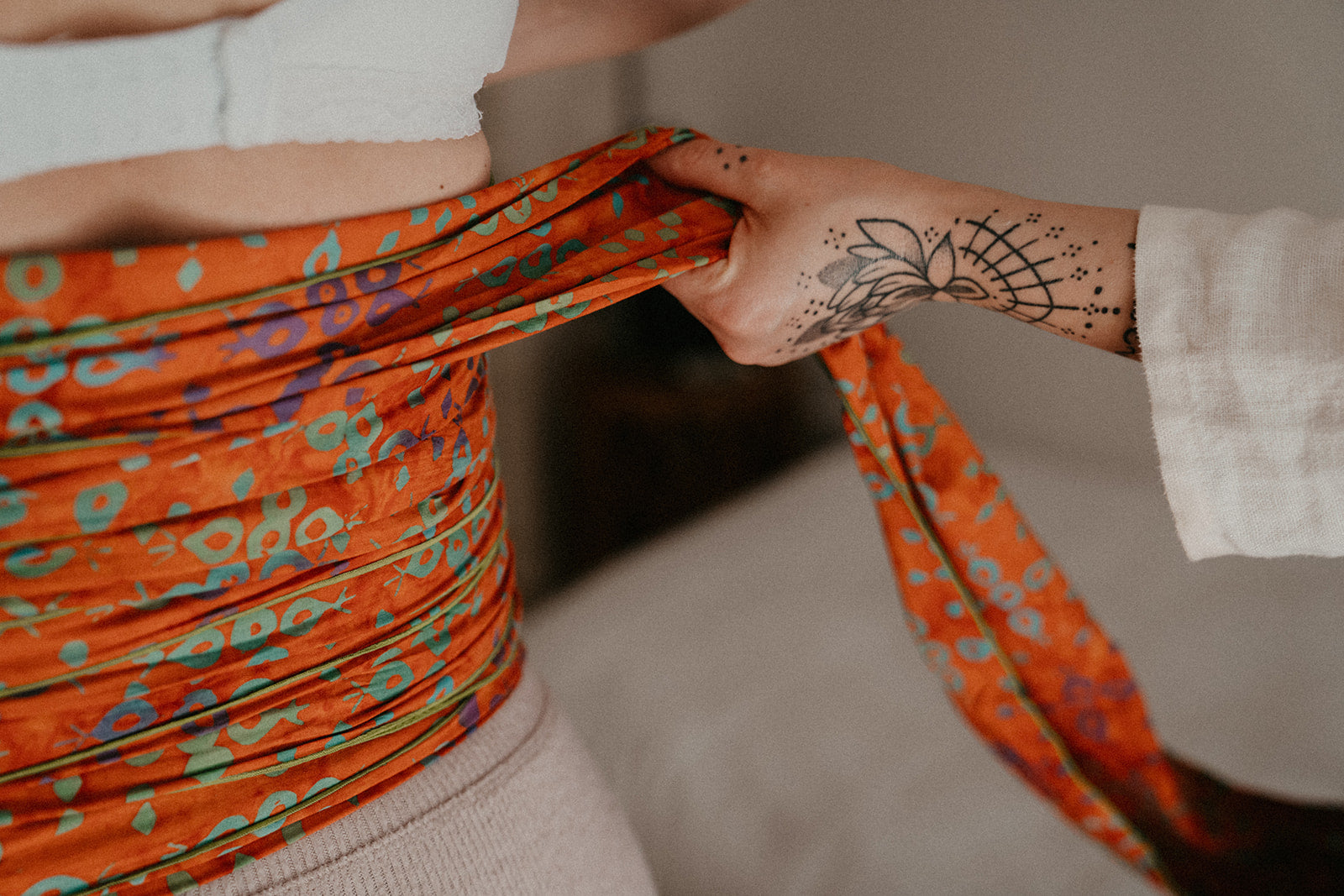
·
Belly binding is an entirely new concept for most people and it can be overwhelming at first to know where to start- we get it! We have answered some of your most common questions and given some practical tips in this journal post to make your belly wrapping journey a little easier.
What makes IBU AYURVEDA bengkungs unique?
-
Both styles of the IBU AYURVEDA bengkung are gentle and free from restrictive and painful shape‐wear boning seen in corset style belly bands.
-
We have included both styles on bengkungs in our collection to allow you to choose which style best supports you and your lifestyle.
-
The structural support extends beyond the waist to the ribcage and hips.
-
The material is unbleached cotton or Batik hand-died, which is soft, breathable, non-toxic and durable for hours of comfort. We recommend washing in a lingerie bag with a gentle detergent - no fabric softener.
-
The bengkung adapts to your personal shape and fits most sizes easily.
-
Comes in a variety of traditionally dyed colours. IBU AYURVEDA supports women in developing nations by going above and beyond Fairtrade practices in the traditional manufacture process.
Photo credit: Sarah from @down_to_birth_midwifery with a client using our bengkungs
Is it possible to use the bengkungs alone, or whether you need a postpartum doula or support person?
Truthfully, there is a lot of healing in having a dedicated support person for your postpartum recovery. The amount of mental, physical, and emotional support that comes from someone "mothering the mother" is limitless.
That said, not everyone has access to a doula. In these cases, we recommend having a trusted family member assist you the first few times until you get used to the process. If you are interested in having a postpartum doula - please reach out and we will see if any of our affiliates are based in your area.
We recently collaborated with incredible midwife Sarah Smits of @down_to_birth_midwifery to create some extra tips and tricks for binding with both types of bengkungs - enjoy!
How do I use?
Belly binding can easily be done alone or for extra benefits have a trusted support person help you with massage and binding.
Both the Traditional Bengkung and the Modern Bengkung are simple to use, we have to step by step tutorials available for both of the styles and also more details video with both types. Please watch the instructional videos on YouTube for detailed guidance.
Whilst the traditional style requires many knots, the Modern loop through Bengkung is used by wrapping the flat panels of cloth around your abdomen from the base of your hips to just below your bust and then it has simple thread through loops to guide you through the process of creating a bind on the abdomen. This style is considered modern due to the ease of thread through loops.
Each Bengkung comes with a calico bag and postpartum guide brochure with link to the instructional video.

What do do before using the bengkung?
A warm bath and massage with skin and nerve repairing oils are ideal before binding. Before the wrapping process, the mother is customarily given a massage or self massages with a herbal oil to further facilitate the healing process. We worked with a leading physician to formulate our crystal elixir enhanced Ayurvedic balancing body oils. If your time poor (we understand!) at least apply the oil to your abdomen and lower back.
Can I use the bathroom while wearing the bind?
Absolutely! Both of our binds can be lifted from the bottom. We do recommend wearing loose fitting clothing in the early days.
How to choose between the modern and traditional bengkung?
They both deliver the same results, it is more about personal preference for style and ritual. The traditional bengkung may take a little longer to bind at first, however it can give you more freedom and length with the bind. The modern bengkung is easier to bind, due to the thread through loops, and also the extra support panel is comforting. Whilst the modern bengkungs are slightly easier to bind initially, but both are very manageable alone after a little practice.
This leads to sizing - how do I choose the correct size bengkung?
If you are considering the traditional bengkungs, then you have a choice between the 15 metres and the 17 metres. Whilst essentially they are both free sizes, the 17 metres will allow for a better size area of binding if you have a larger torso or thicker waist.
If you are considering the modern bengkung, again these are very flexible in size but the length of ties and panels increases with the larger sizes to allow for better torso coverage. To be safe in postpartum usage, we often tell mothers to think back to your pre-pregnancy size and add 1 size onto this. Also take into account if you have a very long torso or thicker waist, in these cases the XL would be more suitable.
When do I start using the bengkung?
It is recommended to commence belly binding 1-2 days after delivery for a vaginal birth. For a C-section, we recommend wait 3-4 weeks or until you have gained approval from you health care provider and the wound is cleared.

Photo credit: Doula Louise from @louisebirthphotography with our bengkungs
For how long should I wear the bengkung?
We recommend wearing the benkgung for 12 hours a day for the first 6 weeks to 3 months. Some women bind regularly for the first 3-6months, others may bind on and off over the first year. The best results come from binding consistently on a daily basis as soon as possible after delivery. However, it is never too late to start a womb and abdomen recovery regime with benkgung belly binding.

Is it ever too late to begin binding with the bengkung?
We have women of all ages and in all stages if life begin binding for increased recovery and awareness of the womb and abdomen space. Whilst the most obvious results come from using immediately after delivery or abdominal surgery, you can still bring healing awareness and recovery if you start years later.
What to do with the bengkung after I have finished being postpartum or in abdominal recovery mode?
Some women choose to reuse their benkung for PMS support, it makes a wonderful support for cramps and backache. Others put aside for future babies, or share with friends and family members.

Can I wash the bengkung?
Absolutely, it is important to wash them as they do absorb oil and sweat during the postpartum period, we recommend either hand washing with a gentle detergent or placing inside a smalls bag and using a gentle cycle on the washing machine.
Do NOT use fabric softener. And it is preferable to air dry the bengkungs - dryers may cause shrinkage.
*TIP: It is ideal to have two bengkungs on hand, so you can continue to bind when one is in the wash.
Is there a best oil for postpartum usage - how do I know which of your oils to choose?
For postpartum there is a general healing oil - we always recommend Vata oil for postpartum. The herbs and oils in this oil are very grounding, restorative and repairing for a women's skin and nervous system postpartum. The key priority for postpartum care is to calm the Vata.
After women give birth, no matter what their original constitution is, they are high in Vata due to the space left in their womb. When you combine all the lost sleep, loss of fluids and disturbance of digestion - you can see why calming Vata is important. As such it is highly recommended to use nourishing oils and warming foods, and reduce Vata deranging actions - including the intake of cold foods, stimulants, travel, and exposure to wind.
What is the white wax residue on the traditional bengkung?
Each of our bengkungs are handmade using a traditional dye method called batik. During this process natural wax is used to create the patterns. Some residue may occasionally be left over and will come out in the first wash.

⭐A few tips regarding the self massage and self-wrapping process:
- It is really important to gently warm the oil, especially if you live in a cold climate, before applying to your body. This increases the efficacy of the herbs and their medicinal benefits. It is easiest to do this by either warming it up in your palms or transferring some oil to a sealed container and placing the container in a sink of hot water.
- Stand in front of a mirror to help guide your hands, especially the first few times you bind alone. We have video tutorials for both types and you can play these while binding. We also have PDF instructions - so please reach out if this is your preference.
- With both bengkungs, the bind starts at your hips and moves upward, wraps around your waist, knots in front and repeats up your abdomen to just under your breast.
Any more questions - please reach out via DM or email info@ibuayurveda.com.au ♥

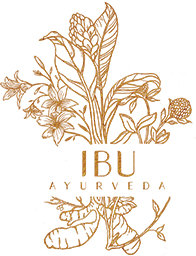



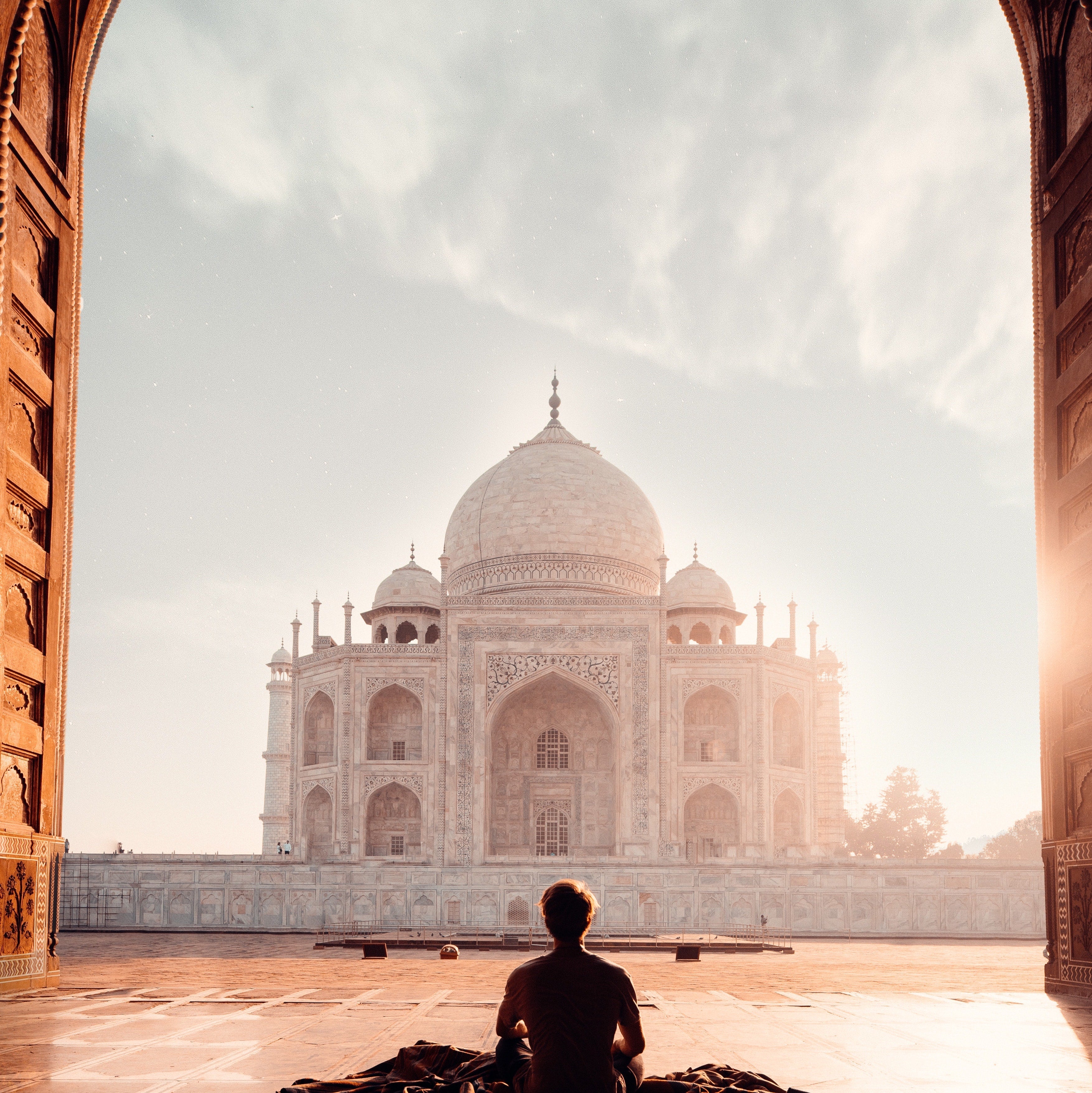
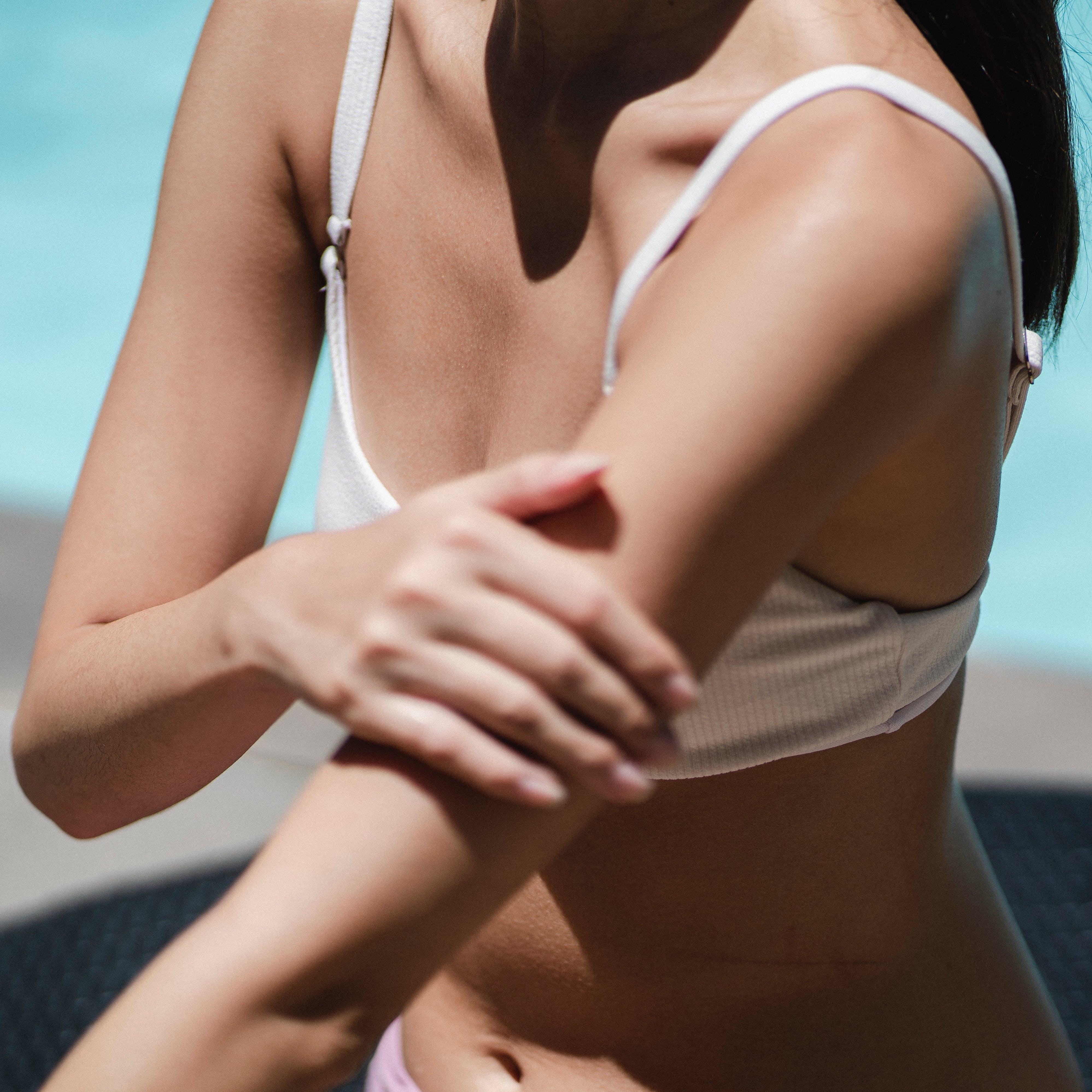
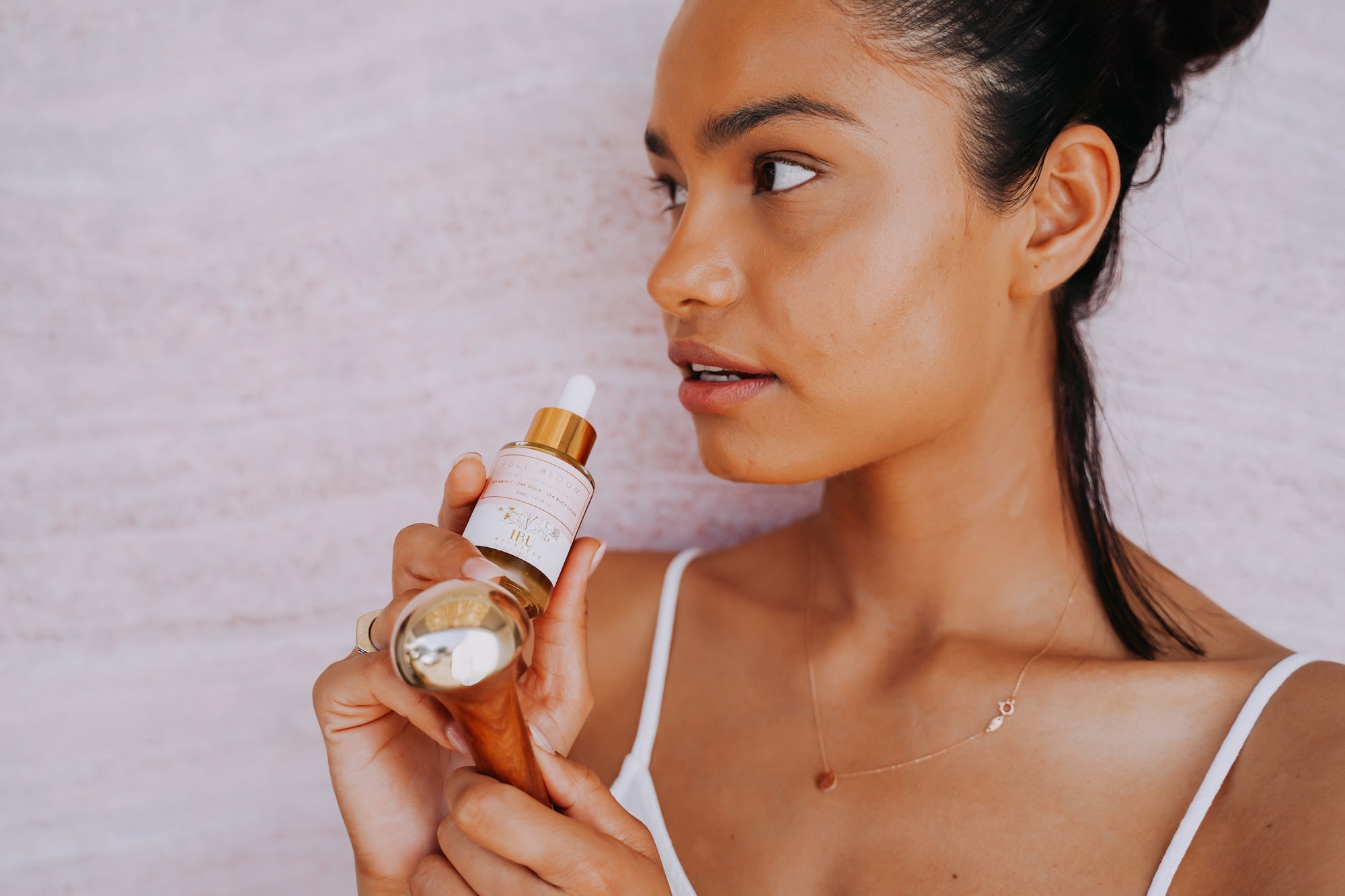
Comments
Carmen —
Hello there, I live in the south of Sydney and am very interested to try the bengkungs with the help of a professional. As per your website, I’m wondering whether you know any postpartum doula who provide belly binding service in Sydney that you could refer me to? Much appreciated!